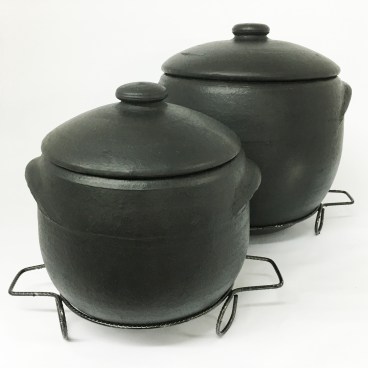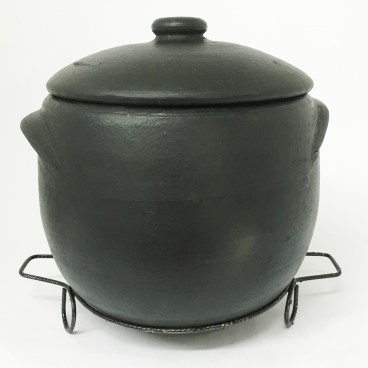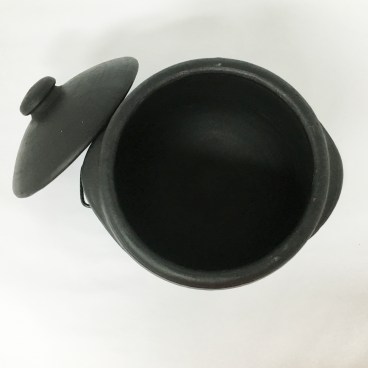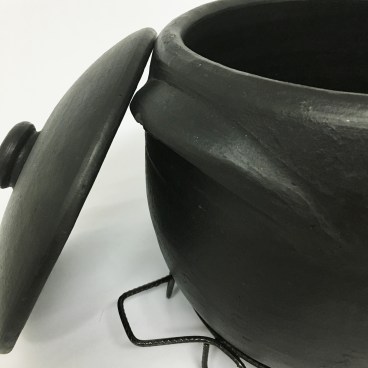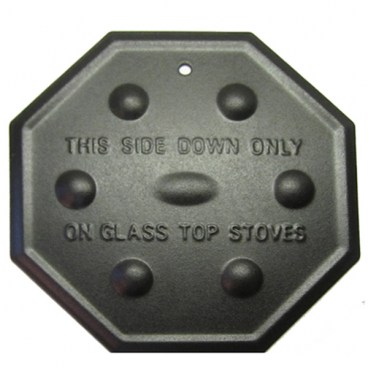Brazilian Clay Pots are undoubtedly one of the most significant representations of the culture of the Brazilian State of Espírito Santo. The clay stock pots, known as Caldeiros de Barro Capixaba, have been made for centuries by the indigenous people that inhabited the coastal regions long before the European colonization of Brazil began in 1500.
Originally the unglazed bowls and pots were molded by hand using black clay and mangrove tree sap which resulted in very rustic pots indeed. The pots were also fired over open fires rather than in a kiln. Today, our artisans use similar techniques and raw materials, however, they are molded to produce uniform sizes and shaped, and are kiln dried which makes them harder and more resilient.
These clay stock pots are great for making large quantities of food such as soups and beans and are great for making the Brazilian favorite, Feijoada. They come with their own wire trivet in order to take them to the table for an exotic presentation.
| |
Small |
Medium |
| Item Number: |
BRZ-1215-08 |
BRZ-1215-11 |
| Dimensions (inches): |
|
|
| Length: |
9.5 |
12.0 |
| Width: |
8.25 |
11.00 |
| Height: |
9.50 |
11.25 |
| Diameter: |
7.0 |
10.0 |
| Capacity: |
3.5 qt |
8.0 qt |
| How we measure |
 |
|
Appearance
The Brazilian Clay Pots are truly rustic items, and although similar to Black Clay La Chamba Pots, they are not as smooth. As with most handmade products by artisans around the world, the pieces may have slight imperfections in the form or finish of the materials. Sometimes sizes of same model pieces may also vary slightly, however, these imperfection do not compromise the aesthetics or functionality of the pieces and are considered normal and to be expected. Likewise, although lids are made individually to match each pot, they do not always fit perfectly as the two parts may shrink differently during the firing process. The lids do not fit tightly on the rim of the pot, but more rest on top of it.
You may observe with certain use that your pieces may change in color, especially on the bottom where there is direct contact with heat. This is normal and does not affect the pieces in any way.



